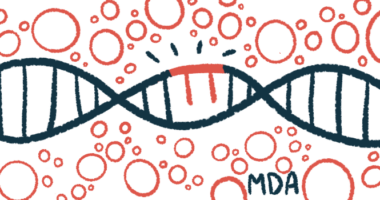Trial will test gene therapy for limb-girdle muscular dystrophy type
Atamyo cleared to launch study of ATA-200 by regulators in France, Italy

Regulators in France and Italy have given Atamyo Therapeutics the green light to launch a clinical trial testing ATA-200, an investigational gene therapy for children with a type of limb-girdle muscular dystrophy called LGMD2C or LGMDR5.
The multicenter, dose-escalation Phase 1b study (NCT05973630) — which will assess the safety, efficacy, and pharmacological and immunological properties of a single dose of ATA-200 — will begin dosing later this year, Atamyo announced in a company press release.
“We are thrilled to obtain our [clinical trial application] approval in France and Italy for the devastating LGMD2C/R5 disease affecting primarily a pediatric population and for which there is no approved treatment,” said Sophie Olivier, MD, Atamyo’s chief medical officer.
“Atamyo plans to initiate dosing in patients for ATA-200 in third quarter 2024,” Olivier said.
Limb-girdle muscular dystrophy, or LGMD, is a group of disorders characterized by muscle wasting in the shoulders and hips. Type 2C/R5 is a subtype of LGMD caused by mutations in the SGCG gene, which encodes instructions for making a component of the sarcoglycan protein complex primarily found in the skeletal muscle.
Phase 1b study of ATA-200 to enroll 6 children with LGMD-2C/R5
Mutations in the SGCG gene are thought to prevent the sarcoglycan complex from stabilizing dystrophin — one of a group of muscle proteins that protect muscle fibers from damage during contraction and relaxation.
Symptoms of this limb-girdle muscular dystrophy type typically emerge in early childhood, leading to progressive muscle weakness and the loss of walking abilities (ambulation) before adulthood. About half of LGMD-2C/R5 patients have heart involvement in the form of dilated cardiomyopathy, in which the heart chambers stretch and become thin.
To date, there is no cure for the disorder and no therapies to slow or halt disease progression.
ATA-200 is a gene therapy candidate for LGMD-2C/R5 that uses a modified, harmless, adeno-associated virus vector to deliver a functional copy of the SGCG gene to cells. The goal is to restore the function of the sarcoglycan complex and stabilize dystrophin.
In preclinical animal models, a single injection of ATA-200 was well tolerated, and was found to ease symptoms and normalize disease-related biomarkers, according to Atamyo.
The Phase 1b trial plans to enroll six boys or girls, ages 6-11, with LGMD-2C/R5. Eligible participants will be able to walk 10 meters in less than 15 seconds and rise from a chair with or without arm support.
In the first part of the study, three participants will receive a single infusion of ATA-200 at a dose corresponding to those from preclinical studies. After a review of one month’s data by an independent data safety monitoring board, three additional patients will receive a higher dose.
Trial will be 1st to test treatment for this limb-girdle muscular dystrophy type
The trial’s primary goal is to determine the incidence of adverse events for as long as six months after dosing, and all participants will be followed for an additional 4.5 years.
In addition to safety, the researchers will assess ATA-200’s efficacy, pharmacodynamics, or effect on the body, as well as whether the gene therapy candidate triggers an immune response.
“This is a significant milestone for LGMD-2C/R5 patients and for Atamyo as ATA-200 is the first treatment targeting LGMD-2C/R5 to enter clinical trials,” said Stéphane Degove, Atamyo’s CEO.
Giacomo Comi, MD, professor of neurology at the University of Milan, in Italy, will serve as the trial’s principal investigator.
“It is a great motivation to know that the work we are doing has the potential to make a life-changing difference for the patients affected by this disease,” Comi said.
This is a significant milestone for LGMD-2C/R5 patients and for Atamyo as ATA-200 is the first treatment targeting LGMD-2C/R5 to enter clinical trials.
The European Medicines Agency (EMA) granted ATA-200 orphan medicinal product designation for LGMD2C/R5. This status encourages the development of therapies for rare diseases through benefits such as protocol assistance and a period of market exclusivity if the medication ultimately is approved.
In 2022, Atamyo began testing ATA-100, a similar one-time gene therapy for another form of limb-girdle muscular dystrophy, LGMD type 2I/R9. That therapy candidate received orphan drug designation from the EMA, as well as from the U.S. Food and Drug Administration.
Atamyo’s pipeline is focused on developing novel treatments for different forms of limb-girdle muscular dystrophy — which primarily affect patients in the hip and shoulder areas — as noted by Degove.
“With the ongoing clinical trial of ATA-100 in LGMD2I/R9, the initiation of the clinical program for ATA-200 confirms our unique capabilities in bringing to patients suffering from limb-girdle muscular dystrophies a new generation of safe and effective gene therapies,” Degove said.








